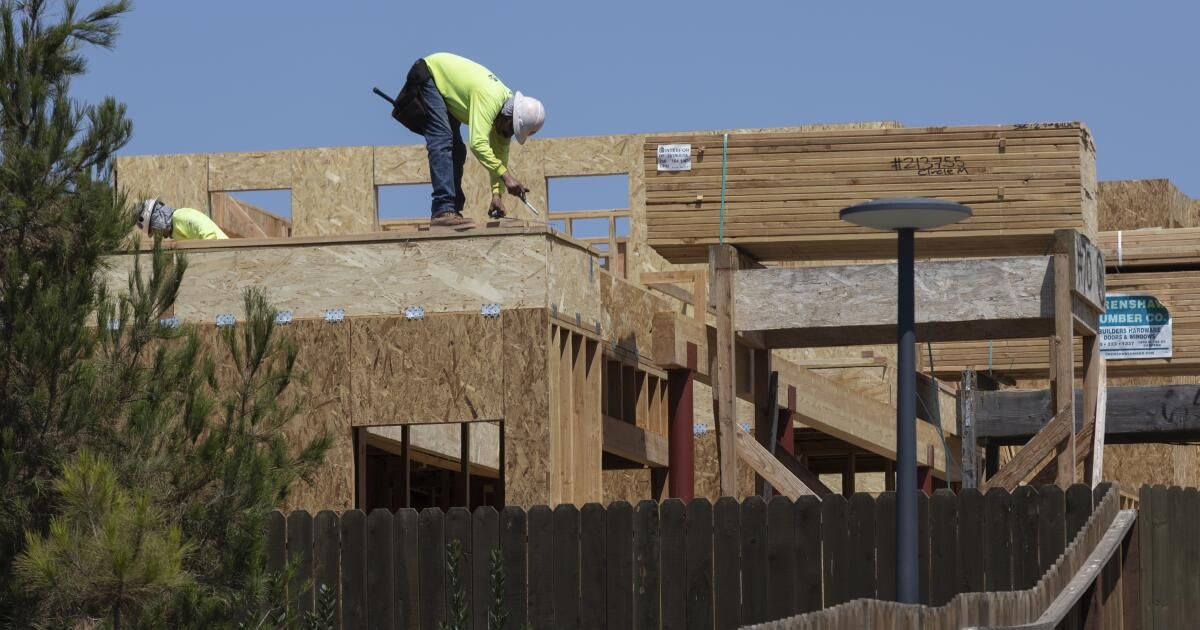On January 9, the United States Supreme Court will hear the case from Californian George Sheetz, who applied for a permit to build a manufactured home on his land in El Dorado County and received a traffic mitigation fee of $23,420. Objecting to the lack of connection between the dollar amount and his family’s actual impact on traffic in the area, Sheetz paid the fee but turned to the legal system. Sheetz vs. El Dorado County, California, addresses only a small part of the state’s housing crisis. Still, it will be important to millions of people who can’t find affordable housing here and in many other states.
When “impact fees” are freed from the increased costs a city or county will incur due to a new home or development, the fees can do more than present someone with an unfair bill: they can also reduce housing construction. In a country where a housing shortage has led to sky-high prices, this matters more than you might think.
Of course, developers should pay their fair share. If construction fees fail to cover the costs of increased utilities required by new development, elected officials and voters turn to other means to cover or avoid those costs. They may impose growth restrictions or other exclusionary zoning policies to block the construction of new housing rather than accept projects that lead to higher taxes or degraded services.
We see widespread evidence of this happening when localities adopt rules like single-family zoning, minimum lot size requirements, and aesthetic requirements that ensure only expensive housing, which generates higher property taxes, can be built.
Properly established impact fees offer a way for development to pay its fair share and reduce political pressure against needed growth. Local studies have found that appropriately set rates are associated with construction increase in suburban areas.
But when rates are set at arbitrarily high levels, they discourage the construction of new homes and add to the country’s housing affordability challenges, causing stress for renters and buyers of new homes.
In 2013, the Supreme Court held that all permit fees must have an essential connection to a development’s actual impact on city or county services, and a price roughly commensurate with it. This significantly reduces the risk of tariffs stifling development.
In some states, such as Florida, case law goes even further and requires that fees fund only infrastructure that serves the specific developments on which they were collected. It is no coincidence that Florida’s population has grown more than twice that of the country as a whole, reflecting its opening to new homes and relatively fair prices compared to much of the rest of the country.
But in other states, including California, Maryland, Washington and Arizona, courts have created an exception to the Supreme Court’s proportionality principle, allowing higher rates if they are established by law. The Sheetz case will test whether that exception is constitutional.
Part of the rationale for exclusion is that voters have a remedy against excessive screening at the polls. In theory, they can eliminate responsible legislators.
However, any claim that voters can and will actually do this is dubious. Property developers make up a small proportion of any electorate. Future home buyers or renters (those who need municipalities to incentivize, not discourage, housing construction) may not even vote or live in the jurisdiction when rates are determined. On the other hand, the people who do vote are likely to be those who already own homes nearby and tend to resist growth: Their properties rise in value if high rates keep housing supply low.
The housing affordability crisis is real. Californians in particular should understand the simple calculation of supply and demand that is exacerbating homelessness and causing seven cities (or metro areas) in the state to rank among the 10 most expensive in the country. according to US News and World Report. When and where state courts allow local politicians to cater to their wealthiest constituents, charge exorbitant impact fees, and exclude new housing, the situation will not improve.
The Supreme Court is expected to rule on El Dorado County fees in the first half of 2024. The legal argument that all impact fees, no matter who sets them, should be subject to the same conditions is strong . And during a nationwide housing crisis, the economic arguments against state and local practices that worsen housing affordability and impede needed housing production are even stronger.
Carlos Gardner He is an attorney and researcher at the Mercatus Center at George Mason University. Emily Hamilton He is director of the Mercatus Urbanity Project.












